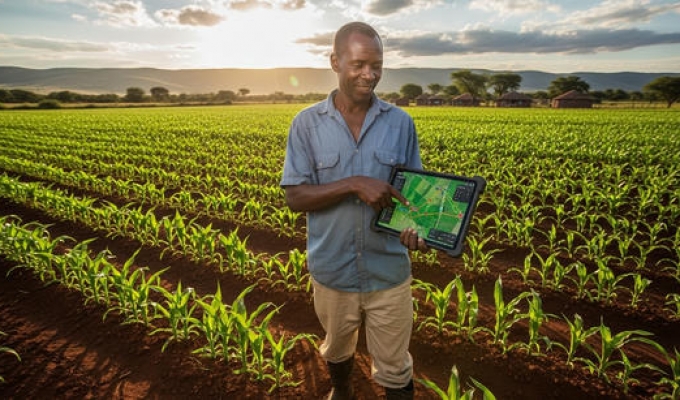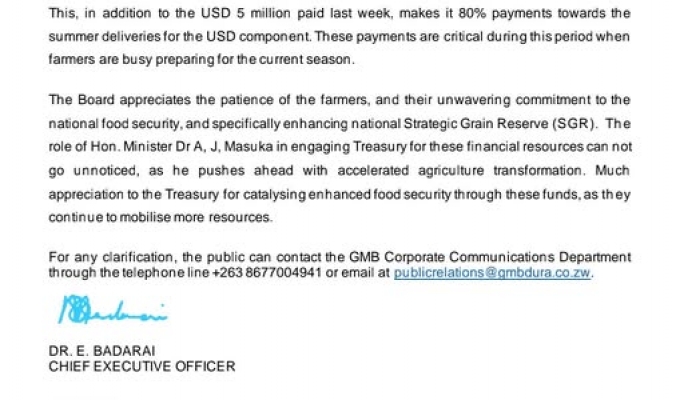October 17, 2025 | Rawlings Kofi
Zimbabwe, a nation with a rich agricultural history, is charting a new course for its farming future. The country is embracing a technological revolution, leveraging cutting-edge digital tools to transform its agricultural landscape. This isn’t just about modernizing old practices; it’s about building a resilient, efficient, and profitable agribusiness sector from the ground up. The government's ambitious goal to restore Zimbabwe's status as the "breadbasket of Africa" is now powered by a potent combination of policy, innovation, and a new generation of tech-savvy agriculturalists [1].
What is Digital Agriculture and Why is it Crucial for Zimbabwe?
Digital agriculture, often referred to as agritech or e-agriculture, involves the use of technology to improve the efficiency, sustainability, and profitability of farming. For Zimbabwe, a country facing the dual challenges of climate change and the need for enhanced food security, the adoption of digital agriculture is not just an option—it’s a necessity. By integrating technology into farming practices, Zimbabwean farmers can make more informed decisions, optimize resource use, and increase their yields.
At the heart of this transformation is the integration of geospatial technology, a field that uses tools like GIS, remote sensing, and GPS to analyze and manage land and resources. The Food and Agriculture Organization (FAO) and the African Development Bank (AfDB) are supporting this shift through initiatives like the Earth Observation for Statistics (EOSTAT) project. These programs provide unprecedented insights into crop health, resource allocation, and farm management, enabling a move towards climate-smart precision agriculture.
Key Technologies Driving Zimbabwe's Agritech Transformation
The digital agriculture ecosystem in Zimbabwe is a diverse landscape of interconnected technologies. Here’s a look at some of the key innovations making an impact:
|
Technology
|
Application in Zimbabwean Agriculture
|
|
Geographic Information Systems (GIS)
|
Enables precise farm verification, land mapping, and resource management.
|
|
Remote Sensing & Satellite Imagery
|
Monitors crop health, assesses drought impact, and provides data for yield predictions.
|
|
Internet of Things (IoT)
|
Deploys sensors to track real-time soil pH, moisture levels, and other critical parameters.
|
|
Artificial Intelligence (AI) & Big Data
|
Analyzes vast datasets to provide farmers with predictive insights and decision support.
|
|
Drones
|
Used for aerial surveillance of crops, targeted pesticide application, and field mapping.
|
This fusion of technologies is not just theoretical. It's delivering tangible results. As Emmanuel Misi, a Monitoring and Evaluation specialist with the Agricultural Finance Corporation (AFC), explains:
"We can now detect the actual hectares of land a farmer owns, which helps us reduce inefficiencies and support more accurate input distribution." [1]
Overcoming the Hurdles: Challenges in Zimbabwe's Agritech Adoption
Despite the immense potential, the path to a fully digitized agricultural sector is not without its challenges. Key obstacles include:
•Infrastructure Gaps: Limited access to high-performance computing and reliable internet connectivity in rural areas.
•Capacity Building: A pressing need for comprehensive training in GIS, remote sensing, programming, and data analytics. Explore our Production Guides for practical tips.
•Bridging the Gap: Strengthening the linkages between academic institutions and the agricultural industry to foster innovation and talent development. Our Webinars often feature experts discussing these topics.
Addressing these challenges is crucial for ensuring that the benefits of digital agriculture are accessible to all farmers, from large commercial operations to smallholder farms.
A Vision for a Bountiful Future: The Road to a Digital-First Agribusiness Sector
The long-term vision for Zimbabwean agriculture is one of self-sufficiency and economic prosperity. By harnessing the power of technology, the nation aims to create a future where farmers are empowered, food security is strengthened, and economic growth is driven by a vibrant agribusiness sector. The journey is ambitious, but the seeds of transformation have been sown. With every pixel of satellite data and every sensor in the soil, Zimbabwe is redrawing its agricultural map, paving the way for a more sustainable and productive future.
Frequently Asked Questions (FAQ)
Q: What is digital agriculture?
A: Digital agriculture (or agritech) is the use of technology—such as IoT, AI, drones, and satellite imagery—to improve farming practices, increase efficiency, and boost profitability.
Q: How is technology helping farmers in Zimbabwe?
A: Technology is helping Zimbabwean farmers with precise farm verification, real-time monitoring of soil and crop health, and data-driven decision-making to optimize resource use and improve yields.
Q: What are the main challenges for agritech in Zimbabwe?
A: The main challenges include limited access to high-performance computing and internet in rural areas, and a need for more training and capacity building in new agricultural technologies.
References
[1] Food and Agriculture Organization of the United Nations. (2025, April 27). Geospatial technology revolutionizing Zimbabwe's agricultural landscape. FAO. https://www.fao.org/africa/news-stories/news-detail/geospatial-technology-revolutionizing-zimbabwe's-agricultural-landscape/en



